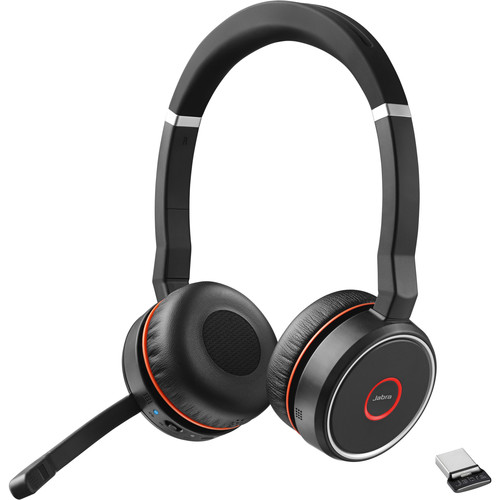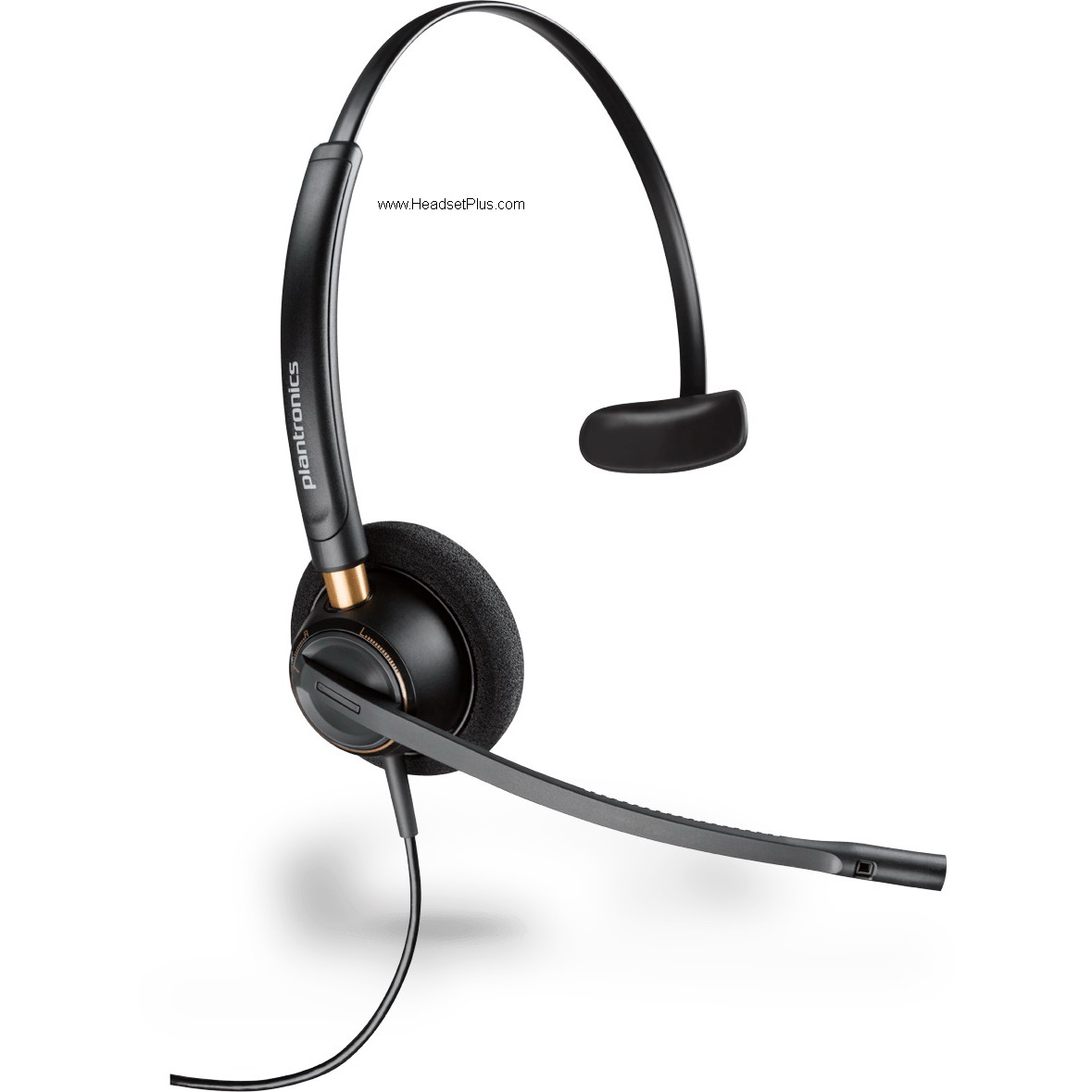Common Plantronics Headset Terms
2.5 mm
2.5 millimeter plugs are standard, round plugs. Many Plantronics mobile
headsets come with this size of plug, found on most standard mobile and cordless phones.
3.5 mm
3.5 millimeter plugs are standard, round plugs often found on stereos and computers. They are larger than the 2.5 mm round plugs found on telephones. Many Plantronics computer headsets come with two 3.5 mm plugs which connect into your sound card’s microphone input (pink or red) and line output (black, blue, or green). Many modern smart phones (Apple iPhone, Samsung have 3.5mm Headset jacks.
A2DP (Advanced Audio Distribution Profile)
A2DP is a Bluetooth profile that transmits stereo sounds. Also referred to as the AV profile, it is designed to transfer a stereo audio stream (such as music) from an mp3 player to a headset or car radio. The Plantronics Pulsar headsets support the A2DP profile.
Amplifier
Amplifiers make sound louder. This technology enables headsets to be used with corded phones and phone systems. Plantronics manufactures and markets a wide selection of corded, stand-alone amplifiers, such as the Plantronics Vista M12. The Plantronics Vista M22 includes
Clearline audio to improve call quality in any environment, especially wideband VoIP. Amplifiers are also included as part of a headset system, such as thePlantronics S11 and Plantronics S12. The CA10 is an amplifier for a cordless headset system so the headset and the amplifier go with you thought out the office.
AudioIQ
AudioIQ makes wireless conversations effortless and pleasant, regardless of the environment. For incoming calls, AudioIQ automatically adapts to background noise levels and intelligently improves the receive quality, clarity and volume level. For outgoing calls, AudioIQ reduces background noise for listeners up to 7-8 decibels, or by approximately 50 percent. It also minimizes interference from artifacts such as speech distortions to maintain exceptionally clear voice intelligibility.
Analog
Analog refers to a type of sound signal. In regards to Plantronics products, it refers to computer headsets that plug directly into a computer’s sound card with two, round 3.5 mm plugs.
Behind-the-head
Plantronics recently introduced the new, behind-the-head neckband accessory that adds a unique wearing style to DuoPro (Plantronics H181, Plantronics H181N) and DuoSet (Plantronics H141/Plantronics H141N) headsets. The neckband offers a fresh alternative for those looking for a contemporary wearing style.
Binaural
Binaural headsets cover both ears, while monaural headsets cover only one. The
Plantronics HW261N is very popular Plantronics Binaural Headsets.
Bluetooth
Bluetooth is an amazing new wireless technology using short-range radio links that promises to eliminate the cables and wires that currently connect most computing and communications devices. Plantronics using this technology in such products as our new wireless mobile headsets.
Cell Phone Jack
See “2.5 mm.”
Clearline
Plantronics Clearline is an audio technology used for superior call clarity, and it is featured in the Plantronics Vista M22 amplifiers. It is compatible with both traditional phones and headsets as well as wideband VoIP phones and headsets. It provides advanced echo management, delivers consistent and comfortable call volume, reduces background noise, and protects against loud noises.
Computer Jack
See “3.5 mm”
Convertible
Plantronics Convertible headsets offer the choice of two wearing styles, usually over-the-head for stability or over-the-ear for easy on/off convenience. These headsets can easily be “converted” from one style to the other in a few simple steps. Plantronics convertible headsets include the DuoPro™ (Plantronics H171/Plantronics H171N), the DuoSet® (Plantronics H141/Plantronics H141N).
CA (Cordless Amplifier)
CA stands for “cordless amplifier.” These units connect into your phone’s hand receiver port and come with a remote that can be used away from the desk.
CS (Cordless System)
CS stands for “cordless system.” Cordless systems come with both a CA (cordless amplifier) and a headset. See “CA” for more details.
DECT
DECT stands for “Digitally Enhanced Cordless Telephony”, which is a type of wireless technology using a voice only 1.9Ghz frequency in certain Plantronics headsets such as thePlantronics CS540 wireless headset system , as well as others.
DSP (Digital Signal Processing)
In Plantronics computer headsets, DSP refers to computer headsets that connect via the USB port rather than the computer’s sound card.
Ear bud and In-the-ear style
Ear bud style describes a small, discreet headset with a speaker that fits in the ear and the microphone positioned along the cord. The Plantronics H81N office headset is an example.
Firefly
Firefly is the unique in-use indicator light that lets others know you are on the phone. No more interruptions! You can find it on the Plantronics CT14 cordless headset telephone and the Plantronics S12 Headset System
Handset Receiver Port
The handset receiver is the portion of the telephone that you hold in your hand when talking. It is generally attached to the phone with a curly cord. The hand receiver plugs into the phone’s hand receiver port (usually a square, modular plug).
Headset Port
Only some, but not all, phones have a headset port. This headset port may be a round, 2.5 mm plug, or a square modular RJ9 plug. However, most Plantronics amplifiers are designed to plug into the telephone’s hand receiver port rather than the headset port.
Modular Jack
Modular jack generally refers to modular, RJ9 (telephone like) plugs. Most Plantronics amplifiers use modular ports.
Monoaural
Monoaural headsets cover only one ear, whereas binaural headsets cover both.
Multipoint
Multipoint is also known as “multishifting.” Although all of our Bluetooth headsets can pair with up to 4 different devices, multipoint technology allows some Plantronics Bluetooth headsets to switch active connections between two paired devices. Non-multipoint headsets can be actively connected to only one device at a time.
Noise-canceling
Noise canceling headsets refers to a microphone design that greatly reduces the transmission of background noise, enhancing headset sound quality. Noise-canceling headsets are especially effective for offices with employees in close proximity to one another. In mobile applications, noise-canceling microphones reduce background noise in cars, airports or on the street.
Over-the-ear
Over-the-ear is used to describe Plantronics headsets that have over-the-ear ear loops or other devices to hold headsets in place. The Plantronics H81 TriStar,Plantronics H41 Mirage are some examples.
Over-the-head binaural (over both ears)
When it’s important to help filter or screen out background sound, you should consider over-the-head binaural headsets, such as the SupraPlus (HW261/HW261N). This style provides sound transmission to both ears. Over-the-head monaural (over one ear) Plantronics monaural headsets, on the other hand, deliver sound to one ear. Unless it says otherwise, Plantronics headsets are monaural.
Pairing
Pairing refers to establishing a wireless connection between a headset and a phone. It is often used to describe the initial set up between a Bluetooth headset and phone. Pairing mode is required to make the initial connection between a Plantronics Bluetooth headset and a Bluetooth device. When a Plantronics headset is in pairing mode, it will flash either blue/red or green/red for several minutes. During this time, it is possible to pair the headset to a Bluetooth device.
Quick Disconnect (QD)
On the Plantronics H-Series headsets, the Quick Disconnect (QD) is the flat connector at the end of the headset cable that lets you disconnect your headset from an active call when you need to grab a fax or file, then easily reconnect. With the QD, there’s no need to put the call on hold or remove your headset.
On the Plantronics P-Series headsets, the Plantronics Quick Disconnect (QD) is the flat connector in the middle of the headset cable that lets you disconnect your headset from an active call when you need to grab a fax or file, then easily reconnect. With the QD, there’s no need to put the call on hold or remove your headset..
Resubscribe
To resubscribe is to reestablish the signal between a wireless headset and its amplifier. If the headset uses Bluetooth technology, this process is called “pairing.”
RJ9
RJ9 is a standard, modular plug on most corded telephones. Many Plantronics amplifiers also use this plug size.
Sidetone
Sometime known as an “echo”. Sidetone is a feture that allows you to hear your own voice in the headset while speaking into the headste’s microphone. Depending on your applications, you may not want a sidetone. If your ears are covered, you will be speaking louder than normal; hearing your own voice in the speaker mitigates this.
USB
USB stands for “Universal Serial Bus”, and refers to a common port on computers. Some mobile phones also use USB or “mini-usb” connections to transfer data.
Voice Tube
Voice Tube Also called “attitubes” or “mic sticks”, voice tubes are translucent, plastic tubes which serve as microphones in some Plantronics headsets. Voice tubes are removable and can be replaced.
VoIP
VoIP stands for “Voice-over internet protocol” and refers to sending voice signals and phone calls over the internet.
Windsmart
WindSmart provides wind-noise reduction technology for optimal sound clarity. It’s highly recommended for calls made outside (or in moving vehicles with open windows).
Additional Information:
—————————-
Many have mis-spelled “Plantronics” as: Plantronix, Plantonics, Platronics, plantronic, Planatronics and even Planet Tronics.







